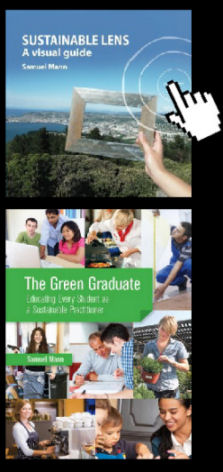Anna Chinn raises the question of Council Policy on fruit trees and community gardens and asks candidates for their opinion and policy.
To date, eight candidates have responded, all positively. Several other people have also commented – positively but with one exception. “Farsighted” replies with this:
You are joking, right? The city is in debt up to and past the eyeballs, has significant governance and financial challenges that will require great care to manage and you want to make fruit trees an election issue?
I think Farsighted’s view is quite unfortunate. I wouldn’t want to vote for someone who saw their job solely as digging out of a hole but with no real vision as what might be created once they got there. Part of my vision of creating an attractive and resilient city is to see challenges as opportunities. Empowering communities to develop themselves and their spaces does not detract from the challenges of debt or governance. Anna responds similarly:
I agree we seem to be headed for a poorer city in terms of finances, so I raised this issue partly as a way to gauge which councillors are going to help us have a resilient and rich city in other ways.
Thank you Anna for the opportunity to express a vision beyond “hunker down”.
Here’s my reply to Anna:
Attractive and resilient city
Hi Anna
I think it vital that, in order to meet a vision of an attractive and resilient city, communities should be empowered to work together so their place matches their vision. Hence I am entirely supportive of changes to policy that support communities in developing food forests and community gardens.
I am very proud to say that the LivingCampus at Otago Polytechnic was my initiative. The LivingCampus celebrates bringing a sustainable future to the core of what we do. Can you imagine my delight last month when I was chairing an international computing conference here and was able to point out the window to see groups of hospitality students tending their patch and bringing in that day’s conference lunch?
It would be difficult to directly translate this to the whole city, but there are principles that we can benefit from. In short, it is the combination of these things that makes the LivingCampus successful.
First, the LivingCampus operates as a food production habitat that celebrates all aspects of urban agriculture: community ownership; permaculture; heritage (of plants, agriculture systems, and place); and technological development. It aims to foster sustainable local food systems.
We have demonstrated that sustainable practice can be integrated into normal business practice, indeed enhancing that business (our restaurant is now approaching closed loop in several areas). It has been critical that the LivingCampus is “owned” by our various communities. The council could facilitate this across the city.
Second: everything is an opportunity for engagement. The majority of the population is divorced from the places and processes that produce the food they eat and medicines they take and clothes they wear. Awareness of issues is difficult when the centre of production is, for many, the supermarket.
Rather than just being a “garden”, LivingCampus is focused on a high quality learning experiences for our community. Even if they don’t benefit from the food – or take up home gardening – students, staff and visitors to our campus can begin to appreciate the systems behind our daily lives.
Third: the LivingCampus is integrated into the wider infrastructure of the campus. That is, it adds sustainable value to the infrastructure: providing composting facilities and so on, while still recognising needs such as access, safety and maintainability and cost. We could maximize food production, but at the cost of all the other services this place provides. In terms of financial cost- we already pay to maintain a garden – it might as well be a productive one.
The same applies to the city – pipelines etc should not be affected, and cost should go down as communities take responsibility for their space. As visitors to LivingCampus will attest, it is also attractive – we shouldn’t have to sacrifice ornament.
We describe the LivingCampus as “more than a garden, more than a museum, more than a campus”. It is an “open-air interactive learning environment, crossed with a community garden, crossed with a vibrant learning institution”. I’d be really interested to hear feedback on an equivalent vision for the city.

Posted on September 2, 2010
0